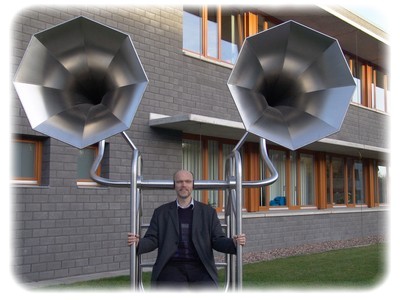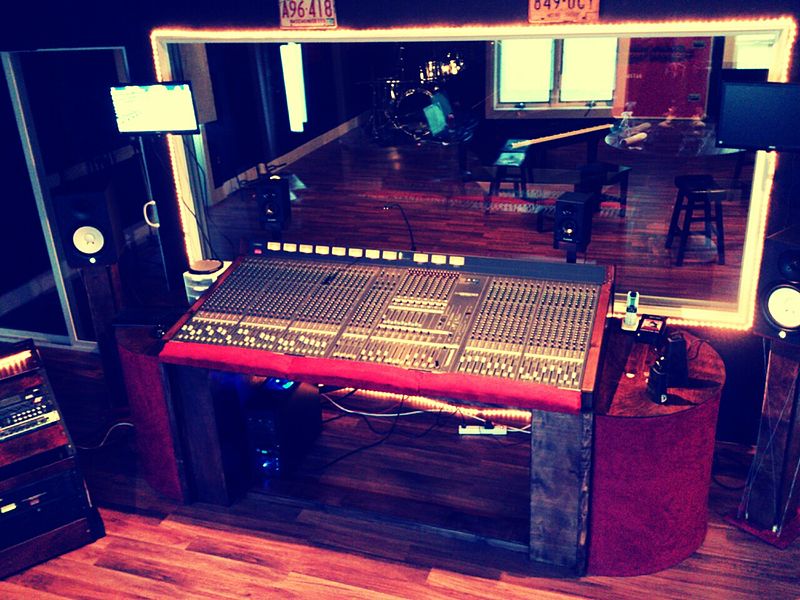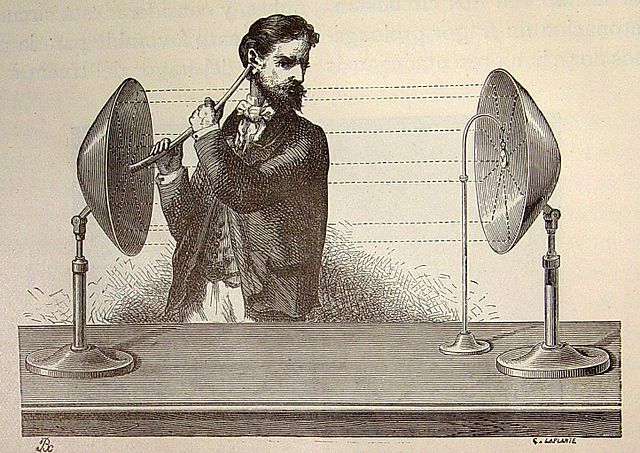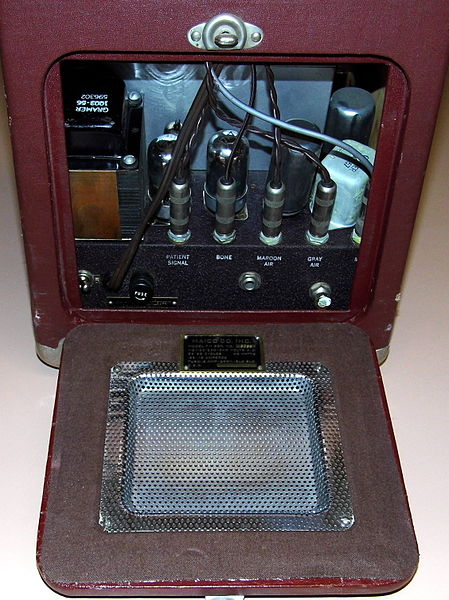The Complicated World of Hearing
What do you hear?
Everything you can.

How do you hear?
Binaurally through the ears using mechanoreceptors in the form of tiny hairs called follicular receptors. Additional data is picked up by other mechanoreceptors throughout your skin including under every hair follicle and inside many of your joints.
Our brains then uses both heard and felt sound data to understand what we are facing.
What are the properties of binaural sound?
Also known as sound localization, this details the time- and level-differences between both ears, such as
- Spectral infomation
- Timing analysis
- Correlation analysis
- Pattern matching
This overall intelligence of the 3-dimensional sound helps form the timbre, room ambience, and performance dynamics of the sound.

This happens whether the sound is a lawnmower outside your window, an oboe solo, your cell phone buzzing, or all three at once. Your brain can sort it out.
This binaural data is all added to frequency when we determine a sound and its total quality. Frequency is the note being played and the sound tone being generated on a measurable scale – basically wavelength at a particular moment in time.
The problem is that modern science only has reliable measurements for frequency. Frequency, besides being easily measured, is easily displayed on our 2D displays, and thus has been studied thoroughly for over 70 years. The field of Digital Signal Processing (DSP) is based on the study of frequencies and human’s interactions with them.
But there’s much more happening when you hear a song you love than frequency analysis and musical recognition, and modern math has yet to capture and replicate it.
This leaves the type of people that insist on proving the math behind everything in the natural world in a bad place, because they are forced to disregard most of this sound data as being outside their realm of importance.
To a listener, the spatial and sizing data is critical, in some ways more than frequency.
Examples: You always know if what you hear is real or a cover band, even if they are playing the cover perfectly. If it is the original artist you also know if it’s been degraded at either the source (a bad copy), or on playback (bad headphones, bad cable, bad reception, etc.).
If you sense a playback problem you start looking to correct it asap. If it’s damaged source you usually just accept it as all you have and try your best to enjoy it.
This all happens without thinking and without training or education. We just understand it as how the physical world works.
When music you love comes to you, regardless of the quality, it lands in your emotions. Since you can only comfortably take in 1 version at a time you eat it up.
Complicated stuff, right? There are indeed lots of variables… most of this can also be independent to you and you only. I have totally different listening spots, gear, and favorite songs than you do. We all do. Emotionally we are all different, minute by minute, week after week, living within our altering moods.
I can project that this “hearing thing” is perhaps impossible to measure with all of the variables.
So if we can’t scientifically measure the emotional quality of music, how else to model this? The marketplace is one way. The marketplace determines a lot in our society. I think it will both benefit and hurt the argument here.
Look at the the fine art market – they have experts, moneyed customers, and various business interests building value into pieces of art, which then sell from dollars to millions of dollars per piece. These experts hunt down and remove fakes to protect the quality of the masters, at any cost.
More people bought Justin Bieber posters last year than fine art. That’s the marketplace, that’s mass duplication.
My point? We can’t let the digital generations burn and loot the art vault with resolution assumptions based on bad science.
We have a century of recorded music that could be upgraded and distributed to this centuries people, and it should be done in highest quality 21st century digital can offer. That is usually 24bit digital.
Imagine if in 1978 two paper companies invented a printing method that output 2,200 colors at 160dpi, perfectly matching their new poster stock, and then sold millions of fine art posters at that resolution. Then for the next 40 years people walked around saying “it’s the same as the original” and couldn’t even accept there was any better quality possible. This is exactly what has happened with CD audio.

The point of all of this: Team Ear, baby!
Don’t let technology worship cloud your views of what the human body is capable of.
The human ear has an extraordinarily large sensitivity range of a trillion to one, allowing us to hear a rocket launch or the footfalls of a cat on a carpet. According to Werner Gitt, the ear is our highest-precision sense organ, capable of responding over twelve orders of magnitude without switching (The Wonder of Man, p.21). Some of this sensitivity is amplified by the eardrum and middle ear ossicles, but the paper reported above shows even more fine-tuning inside the cochlea. Gitt’s book is highly recommended for generating a profound feeling of awe over the design of our senses. Proverbs said, “The seeing eye, and the hearing ear, the Lord has made them both” (Prov. 20:12)
Read more details on one of the studies of the cochlea here.

